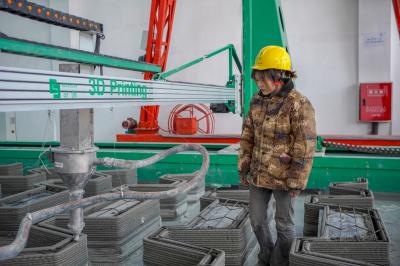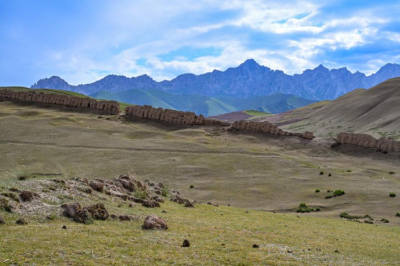Bilingual education has made steady headway. In 2015, the schools that offered bilingual education, ranging from preschools to standard high schools, numbered more than 12,000 with 225,400 bilingual teachers and 3.4912 million students. Every year, more than 3,500 types of secondary and primary school textbooks in ethnic minority characters were published with more than 100 million copies printed.
Teaching conditions in ethnic minority regions have been further improved. From 2012 to 2015, the central government allocated 1.025 billion yuan in support of the middle and western China projects and kindergarten teacher projects under the National Cultivation Plan in 5 ethnic autonomous regions, providing training to more than 870,000 teachers of secondary and primary schools and kindergartens. Normal universities directly under the Ministry of Education offer free education and provide 42,000 teachers to ethnic minority regions. "The Plan of Cultivation of Postgraduate Teachers in Rural Education" provided 4,364 rural teachers to ethnic minority regions. Between 2011 and 2015, 528 projects in aiding Xinjiang education were carried out, with an investment of 10.8 billion yuan, and offering training to 130,000 teachers. 5,300 teachers were selected and dispatched from other regions to Xinjiang for the projects. By the end of 2015, the number of various projects to support education in Tibet had reached 405, with the funding adding up to 938 million yuan, providing training to 6,829 people and moving 3,585 people to Tibet to support the projects. The number of various projects to support education in Qinghai had reached 134, with a total funding of 670 million yuan.
The cultures of ethnic minorities are protected. By the end of 2015, 9 natural and cultural sites scattered in ethnic minority regions including the Potala Palace had been added to the World Cultural Heritage List. 14 ethnic minority arts including Uygur Muqam of Xinjiang had been added to the UNESCO's Representative List of Intangible Cultural Heritage of Humanity and another 4 including Qiang New Year Festivals had been added to the List of Intangible Cultural Heritage in Need of Urgent Safeguarding. 10 experimental zones for cultural protection in ethnic minority regions have been established. 479 ethnic minority heritage items and 524 inheritors from ethnic minority groups have been put respectively on the four national representative lists of intangible cultural heritage and the four national lists of representative inheritors of intangible cultural heritage that have been made public. The book series of explanatory notes on ancient books of ethnic minority groups, entitled Synopsis on the General Catalogue of Ancient Books of Ethnic Minority Groups of China, was published in 2014.
The spoken and written languages of ethnic minority groups have been protected and developed. Efforts have been made to promote the regulation, standardization and computerized processing of these languages. Projects have been initiated for the research and formulation of regulations on the transliteration of people's names to Mandarin from Mongolian, Tibetan, Uygur, Kazakh, Yi and other minority languages. Work has been done on the research and formulation of the table on commonly used Mongolian words, the regulation of translation between Tibetan and Latin, and the standards on determining correct characters and pronunciations in modern Uygur literature language. Databanks on minority languages on the brink of extinction have been set up. The Project on the Protection of Chinese Language Resources has been initiated and implemented. By the end of 2015, 54 ethnic minority groups were using more than 80 spoken languages of their own ethnic groups, and 21 ethnic minority groups were using 29 written languages of their own ethnic groups. Up to 200 radio stations nationwide broadcast in 25 ethnic minority languages. 32 publishing houses of various types publish books in ethnic minority languages. 11 film dubbing centers have been set up throughout the country, using 17 ethnic minority languages and 37 ethnic minority dialects. From 2012 to 2015, they finished the dubbing of a large number of movies into minority languages amounting to more than 3,000 versions. |
- Home
- News |Tibet |Exclusive |China |World |Related News |Latest
- Documents |White Papers |Others
- Photo |Politics |Economy & Society |Culture & Religion |Human & Nature |Beautiful Tibet |Other Tibetan-Inhabited Area |Exchanges |Related
- Video |News |Documentary |Micro-Video |Entertainment
- Art
- Tourism
- In Focus
- About Tibet






